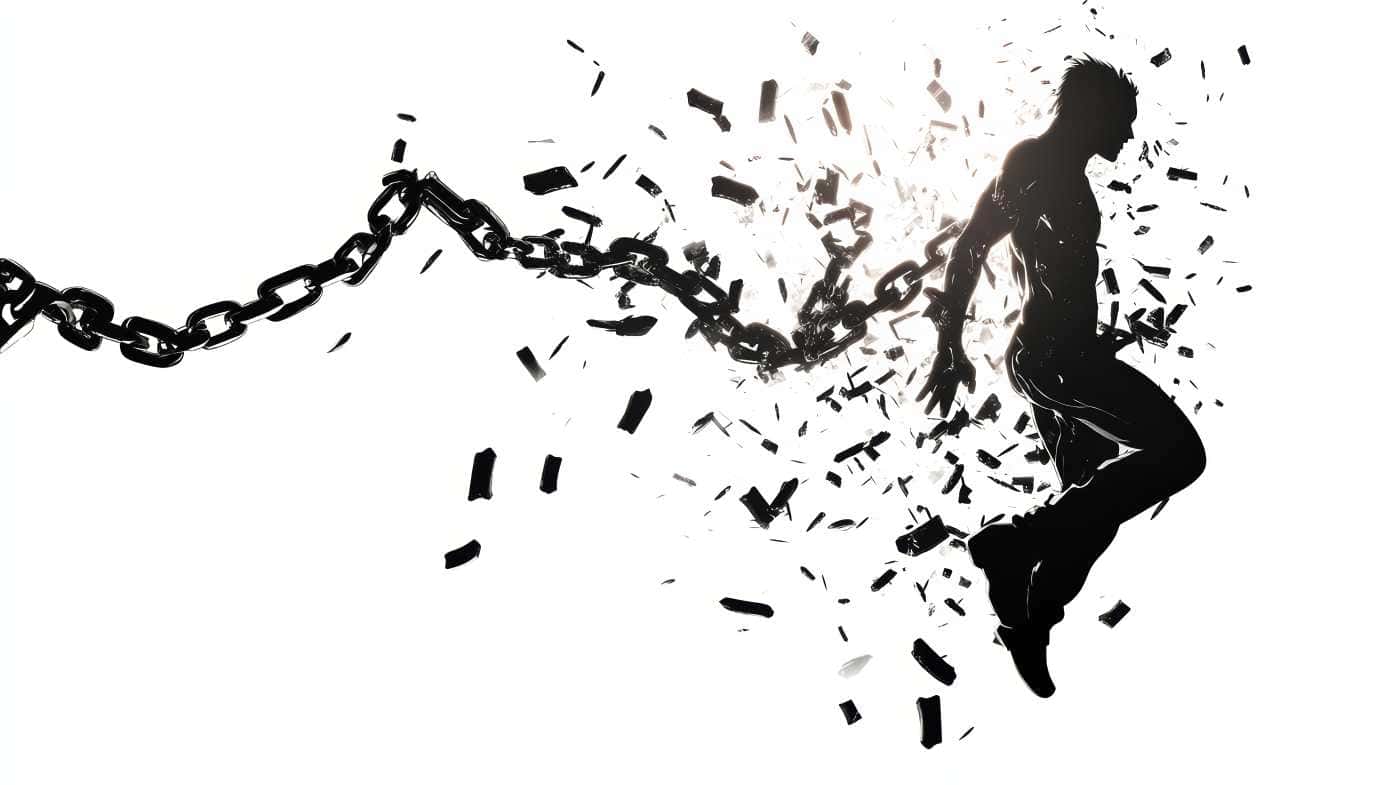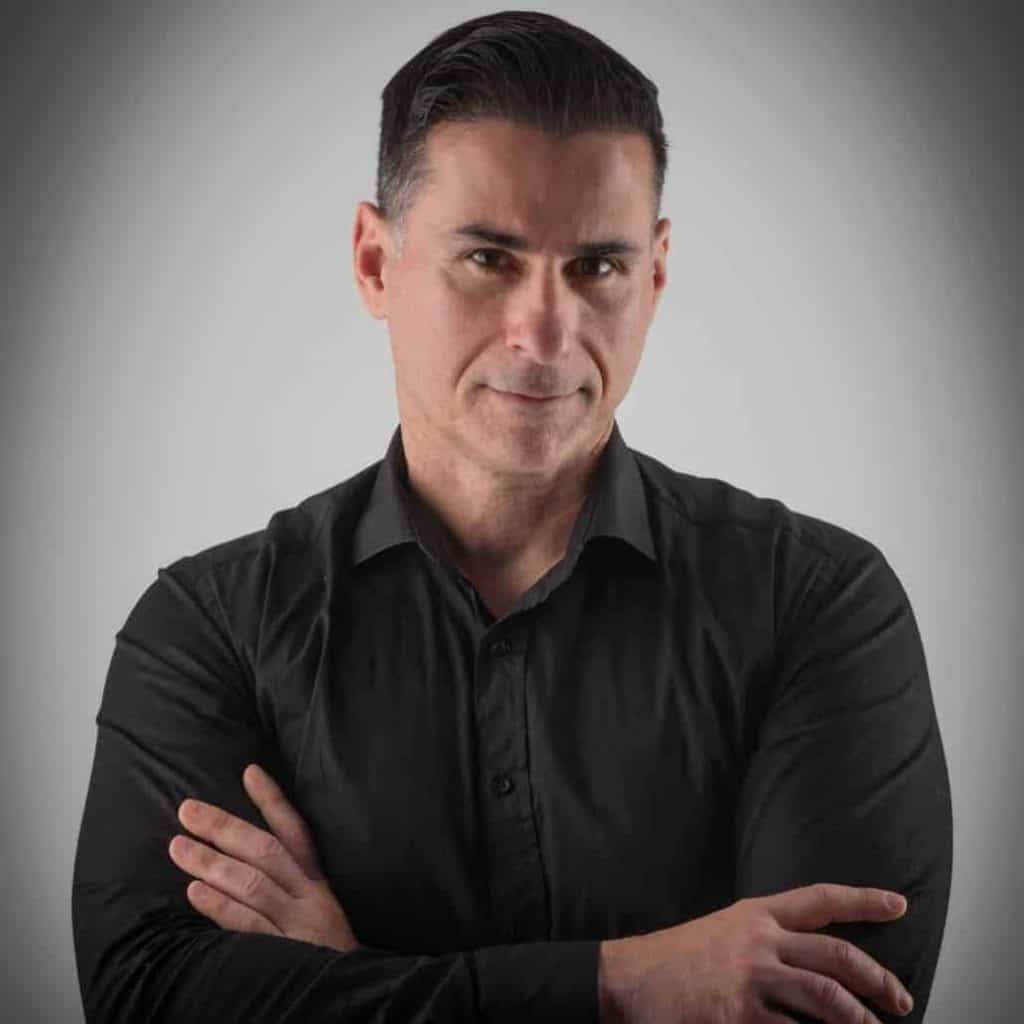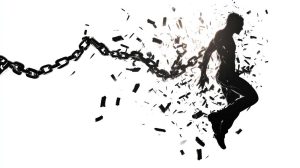If you dare to read this research, it will completely change your business and life, which is a promise.
We will explore the controversial subject of death and how the concept of death/dying applies to creativity, presence, fulfillment, business growth, and enhanced relationships among team/group members or any other type. We will see what neuroscience has to do with this topic and what the West can benefit from the East.
This research is for every leader, executive, manager, employee, and spouse. If you dare to read through all the data presented, you will gain a completely different perspective on life and business.
The fear of death relates to many (if not all) kinds of fears that stop someone from acting from a clear point of view.
This content is not for the faint of heart. Although you can understand and agree (or maybe disagree, but please do it with evidence), it doesn’t work mentally. You need to experience it on a deeper level. That can bring out a great leader from you.
You may be puzzled about finding such research on a business services website. However, it perfectly aligns with our growth and coaching services, and our “Fear, This Liar” book.
Death/dying is a taboo subject due to relating the whole concept to our biological existence. But, from a philosophical and practical aspect, death has immense benefits for personal growth and the enhancement of life and business in all its forms.
We don’t need more fuzziness and noise in life and business. We need more clarity. You will read all the necessary evidence on how this can be achieved.
Surprised with the “dying” approach? Let’s dive into this subject.
Contemplating “death” has long been used as a powerful metaphor in spiritual philosophy – not merely referring to physical dying but pointing to an inner process of mental stillness and ego dissolution.
Eastern teachers like Jiddu Krishnamurti, Osho, and G.I. Gurdjieff often urge us to “die” to each moment as a way to let go of the past and future and awaken to the present.
Modern neuroscience echoes many of these insights: studies on meditation, mindfulness, and even mortality salience (awareness of death) reveal changes in the brain associated with quieting the self, regulating emotions, and potentially enhancing creativity.
This study/research explores how “death” – understood as the death of attachment, of thought, of ego – can dissolve our fixation on past and future, thereby enhancing presence and awareness.
We draw on Eastern philosophical teachings and neuroscientific research to examine:
- Death as a metaphor for mental stillness, detachment, and ego-death in spiritual traditions.
- How contemplating one’s mortality can lead to living more fully in the present moment.
- Practical techniques (meditations and exercises) to “die to the past and future” and enter a state of presence.
- Neuroscientific findings on how mortality thoughts and present-focused awareness affect the brain – influencing self-related thinking, emotional regulation, decision-making, and creativity.
- If there are applications of this “death-based” presence in daily life, including our relationships, choices, self-awareness, emotional clarity, and a deepened sense of unity with others.
So, we aim to show how “dying before you die” can become a practical path to greater awareness, creativity, and personal growth.
Table of Contents
ToggleDeath as Stillness and Ego Dissolution in Eastern Philosophy
“Die to the past every day.” This recurring message in Eastern wisdom encapsulates the idea that psychological death—the ending of our attachments and ego—is essential for renewal and inner peace.
In spiritual teachings, death is often a metaphor for the state of egoless stillness in which one can experience reality directly.
Jiddu Krishnamurti taught that living fully in the present requires “death to the past.” He stated unequivocally: “To live in the eternal present there must be death to the past, to memory; in this death there is timeless renewal.”
Krishnamurti urged people to “die each day” to their memories, experiences, pleasures, and sorrows.
Only by ending the hold of yesterday can the mind be “intensely still” and ever fresh in the now. He emphasized that this inner death is not a morbid state but one of “creative being” – “As you die (to the past) there is the incorruptible…Only in death of the self is there life.” In other words, letting the “self” (the ego bundle of past identifications and future hopes) die opens the door to a living, timeless presence.
Osho (Bhagwan Shree Rajneesh) described the present moment as the “death of the ego.” According to Osho, the ego exists only in time – in memories of the past and ambitions for the future.
“The ego lives on a base of the past and the future… The ego simply does not exist in the present. If you come to the present, then the ego disappears. That is death to the ego.”
Osho often encouraged a practice of continuous inner death: “Be ready to die every moment. Die to the past, die to the future, and die in the present moment.” By “dying to the known” – letting go of all accumulated in memory – we become open to the unknown and the new.
This ego-death is not an end but a transformation: “Yes, it is a death to the ego, but the death of the ego is the birth of the soul… You will die as a drop, but you will be born as the ocean.”
In Osho’s view, each moment of true presence is a resurrection, in which the old self falls away and life is experienced afresh.
G.I. Gurdjieff also stressed the need for an inner “death” before spiritually evolving or being “reborn.” “All religions speak about death during this life on earth. Death must come before rebirth. But what must die? False confidence in one’s own knowledge, self-love and egoism… Before real growth becomes possible, our personality must die.”
Here, Gurdjieff identifies ego and egoism as the aspects that must “die” – our vanity, selfishness, and the false self we cling to. Breaking down the ego is admittedly a “long and difficult task”, but it is the essence of spiritual work in his Fourth Way teachings.
In practical terms, Gurdjieff’s methods (self-observation, self-remembering, and certain exercises) aimed to shake the student from their habitual identity—a kind of ego death that awakens a higher level of consciousness. He often cited the aphorism “Remember yourself, always and everywhere” alongside remembering one’s mortality to cultivate a state free of mechanical ego-driven reactions.
Across these teachings, “death” symbolizes emptiness and detachment: the mind empty of incessant thought, the self detached from its conditioning.
This metaphorical death is not nihilistic but life-affirming – it clears the way for a richer consciousness.
As Krishnamurti beautifully put it, “Die to your experience, to your memory… Only in the death of the self is there life.”
When the noise of ego and time-bound thought falls silent, a still awareness remains in which actual presence and creativity can flourish.
Contemplating Death to Live Fully in the Present
Paradoxically, reflecting deeply on one’s mortality can lead to a greater zest for life and fuller presence.
Rather than morbid resignation, accepting the inevitability of death often brings about a profound detachment from trivial anxieties and a focus on what truly matters.
As various wisdom traditions suggest, “mindfulness of death” is a powerful antidote to the mindlessness of life:
“Die before you die.”
This famous dictum in Sufi and yogic traditions encapsulates the idea of confronting death now, to awaken now. By imagining the finality of death, individuals may free themselves from the delusion that they have “all the time in the world.”
The result can be an intense appreciation of the present moment.
For example, the Buddha encouraged frequent contemplation of death (Maraṇasati). The Buddhist scholar Buddhaghosa noted that out of forty classical meditation subjects, only two are universally beneficial: “the development of loving-friendliness, and the recollection of death.”
Recollecting one’s mortality reminds the practitioner that “one is sure to die,” which helps them “give up the search for what is unworthy” and arouses diligence – effectively shaking off mental lethargy.
In other words, remembering that our time is limited prompts us to drop petty or unworthy pursuits and to live with clarity and urgency.
This aligns with Plato’s observation that true philosophers “practice nothing else but how to die” – meaning they constantly examine life in the light of its finitude, focusing on what is real and meaningful.
Freedom from the past and future
Contemplating death emphasizes the impermanence of all things – our experiences, our possessions, even our identities. Krishnamurti taught that if we genuinely perceive that everything we psychologically cling to will end, we naturally let go of the baggage of yesterday and tomorrow.
“Mind-heart must die each day for eternal being,” he said. When we see that each passing moment is “dead” (gone forever) and the next moment is not guaranteed, the only sane choice is to immerse fully in the present “eternal now.”
This perspective can break our habit of ruminating on the past or anxiously anticipating the future. Instead of living in memory or anticipation, one realizes that now is the only moment available – a realization often reported by people who have had near-death experiences or serious illness.
Psychological research supports this: confronting death can trigger a “revaluation of all values” and a shift in time perspective.
In interviews with elders and terminally ill patients, many reported that after actively confronting their own end of life, “my life became more meaningful” – they refocused on the present, on relationships and experiences rather than abstract future worries.
Thus, death awareness cuts through our mental projections and brings us back to the here and now.
Intensity and aliveness
Far from promoting a passive or bleak outlook, remembering mortality can inject energy and urgency into life.
Osho describes this vividly: “With dying and being reborn each moment you will be able to live life and you will be able to live death also… Live both so passionately that nothing is left behind unlived, not even death.”
When we “die” to each moment – letting it go completely – we also fully live each moment without reserve. Every day, every encounter is recognized as precious when seen against the backdrop of limited time.
Gurdjieff suggested that if humans constantly sensed the “inevitability of [their] own death… as well as the death of everyone” they meet, it would “destroy the egoism completely” in them.
Freed from egoistic concerns, one’s relationships and perceptions become imbued with compassion and immediacy.
Modern reflections echo this: psychologists note that thinking about death won’t make you sad; thinking about death will make you think about truly living.
By facing the transient nature of life, we stop taking it for granted. The small grievances or ambitions that normally preoccupy us fall away, and what emerges is a heightened presence – often accompanied by gratitude, love, and purpose.
In sum, “memento mori” – the remembrance of death – is not meant to be morose. In the context of spiritual and personal growth, it is profoundly life-affirming.
It teaches detachment (since all things will pass) and engagement (since this moment is precious). As one Buddhist teacher put it, we openly acknowledge our fear of dying, and in doing so, we “really want to be there when it happens”—meaning we want to be fully conscious of life’s every moment, including its end.
When we cease fleeing from death, we cease fleeing from life. Embracing our mortality thus becomes a direct path to living more honestly, compassionately, and presently.
Neuroscience of Presence and “Ego-Death”
Modern neuroscience provides a fascinating insight into what happens in the brain when we enter states of deep presence or confront thoughts of mortality.
While science approaches these topics in secular terms, many findings parallel the claims of spiritual traditions about quieting the ego mind and awakening to a broader awareness.
According to current research, let’s explore how present-focused awareness and mortality contemplation affect the brain and behavior.
Quieting the Default Mode Network (DMN)
Neuroscientists have identified a network of brain regions—known as the default mode network—that is active when our minds wander, daydream, or self-reflect (often involving past and future thinking).
Notably, this network (which includes midline structures like the medial prefrontal cortex and posterior cingulate cortex) is associated with our sense of self and internal narrative.
During meditation and intense present-moment awareness, activity in the DMN tends to decrease. A recent meta-analysis of brain imaging studies found that across many styles of meditation, “DMN activity was consistently reduced during meditation compared to control conditions.”
This reduction is interpreted as a drop in self-referential, discursive thinking.
In one study, experienced meditators showed significantly less activation in key default-mode regions even when compared to another active task, suggesting that “suppression of default mode processing may represent a central neural process in long-term meditation.”
In short, when a person enters a state of focused presence (whether via breath attention, mindfulness, etc.), the brain’s “autobiographical chatter” subsides. This is essentially the neural correlate of mental stillness or ego-dissolution that mystics discuss.
From a neuroscience perspective, being intensely in the now turns down the volume on the brain network that generates the sense of an independent self across time.
This finding aligns remarkably with Osho’s point that “coming to the present is the death of the ego” since the neural ego network (DMN) quiets when one is fully present.
Cessation of Thought and “Flow” States
Related to meditation is the study of flow states – those moments of complete absorption in an activity (often artistic or athletic) where one loses self-consciousness and sense of time.
Neuroimaging of flow states shows a similar pattern: reduced activity in self-referential regions and increased focus in task-related circuits.
For example, fMRI studies of musicians and athletes in flow have found that “frontal areas related to self-reflective thinking were less active” during flow.
Psychologists describe flow as “a state of full task engagement and low levels of self-referential thinking (e.g., worrying, self-reflection)”. This corresponds to a transient “quieting” of the ego.
Neuroscience suggests that during flow or deep meditation, the brain shifts out of the narrative mode (past/future, “me”-centered thinking) and into direct experience mode, likely involving heightened attention and sensory processing.
This might explain why people in flow or deep presence report a sense of unity or oneness with their activity; with the ego network downregulated, the usual boundary between self and world fades.
The brain in these states effectively practices a kind of “temporary death” of the ego, which matches the subjective reports of timelessness and unity.
Emotional Regulation and Fear
What about emotion and fear – especially fear of death itself? Interestingly, present-focused practices have been shown to calm the brain’s fear center, the amygdala, and enhance the activity of higher emotion-regulating regions.
In brain scans, even a short mindfulness meditation training course can reduce the amygdala’s reactivity to emotional stimuli and increase connectivity between the amygdala and the prefrontal cortex (which helps regulate emotions).
This means meditators’ brains become less likely to go into fight-or-flight over upsetting images or thoughts; they respond more calmly, with greater conscious oversight. In the context of death contemplation, this is valuable – by calmly observing the fact of mortality (rather than reacting with panic), we engage more prefrontal awareness and less automatic fear.
Long-term meditators even show structural changes – some studies have found that the amygdala shrinks in those who practice regularly.
These findings support that “dying to the future” (i.e., not constantly fearing what might happen) yields a more equanimous, emotionally balanced brain.
When thoughts of death are approached mindfully, they can lose their terror. Confronting death can increase emotional resilience: as one study noted, “actively confronting death-related issues… may increase psychosocial comfort and stimulate personal growth”, whereas avoiding the topic can lead to more significant anxiety.
Neuroscience backs this up by showing that avoidance (suppressing fear) keeps the amygdala active, whereas mindful exposure diminishes its activity over time.
Decision-Making and Focus on Values
The awareness of mortality can also subtly shift decision-making processes in the brain.
While direct neuroimaging of “mortality salience” (the state of being reminded of death) is still emerging, psychological experiments show that people’s goals and choices change when they are reminded of death.
Often, mortality salience triggers what’s known in psychology as “terror management” defenses – for example, people might cling more to their cultural beliefs or seek status as a way to feel immortal.
However, with a more mindful or philosophical approach, thoughts of death can motivate positive decisions, such as prioritizing relationships, authenticity, and meaningful endeavors.
Functional MRI studies on related phenomena (like imagining one’s future or considering life goals) suggest that when people focus on core values and the present impact of their choices, brain regions associated with reward and meaning light up more than regions associated with anxiety.
We might not have a specific brain study of “deciding with death in mind.” Still, we have studies on aging and time perspective: as people subjectively feel they have less time (such as older adults or terminal patients), they often shift toward “present-oriented” decision-making – favoring emotionally meaningful experiences today over hypothetical future gains.
Neurologically, this correlates with reduced activation of distant-future planning circuits and greater engagement of networks tied to emotional salience and reward in the present.
In essence, contemplating death can recalibrate the brain’s decision weightings: choices that bring immediate relational or spiritual fulfillment may start to outweigh long-term, abstract pursuits.
This is consistent with Buddhaghosa’s observation that recollection of death makes one “give up the search for what is unworthy.” On a brain level, energy is redirected from trivial reward-seeking circuits to meaningful contentment circuits.
Mortality and Creativity
A particularly intriguing area is how mortality contemplation affects creativity.
Creativity requires mental flexibility and often a break from conventional thought patterns – something that an encounter with mortality can provoke.
Social psychology experiments have yielded nuanced results: on average, reminding people of death can initially inhibit creative thinking due to anxiety.
However, studies have found that individual differences matter. For people low in neuroticism or those who are more open-minded (low need for strict structure), “mortality salience increased creativity” – presumably because the thought of death prompted them to break out of routine ideas and explore novel ones.
This study, ” The Creative Spark of Death,” found that after a death reminder, participants who were comfortable with ambiguity generated more creative output.
This aligns with the notion that accepting death frees up the “psychic energy” that was tied to defensive fears, now available for imagination. Additionally, engaging in creativity itself can help manage death anxiety.
A 2020 experiment during the COVID-19 pandemic (when death was salient for many) showed that performing a benevolent creative task (something imaginative with a positive or meaningful focus) significantly buffered participants’ anxiety in the face of mortality reminders.
The researchers concluded that creative expression, exceedingly when oriented toward connection or contribution, can serve as an “anxiety buffer” against fear of death.
Neuroscientifically, this makes sense: creativity often induces a flow-like state, reducing self-focus, and it can activate reward pathways that counteract fear responses. Thus, thinking about death may initially jolt our brain’s anxiety circuits.
Still, if we channel that into mindful presence or creative action, we engage other neural networks that can transform fear into inspiration.
Many great artists, writers, and innovators have explicitly used awareness of their mortality as motivation to create – their brains, one might say, learned to turn a potential paralytic fear into a catalyst for expression and originality.
In summary, the neuroscience and psychology of these phenomena reinforce the practical wisdom of the spiritual teachings. When we regularly practice presence (through meditation, mindfulness, or creative “flow”), the brain changes: quieter self-centric chatter, stronger regulation of fear, and more here-and-now focus.
When we courageously contemplate mortality, we can invoke those same present-moment networks to help us find clarity and creativity instead of panic.
The brain is plastic; facing death and staying present will likely strengthen neural pathways associated with resilience, insight, and equanimity. This mental training mirrors “ego death”—as the habitual self fades, a more integrative and creative self can emerge.
Living in Death: Applications
Bringing the concept of “death-based presence” into everyday life can profoundly affect how we relate to others, make decisions, understand ourselves, and experience our connection to the larger whole. Below, we consider a few key areas of life and how the practice of “dying to the past and future” can be applied:
Relationships and Compassion
Constant awareness of life’s fragility tends to soften the heart and reduce ego-driven conflict in relationships.
When we remember that neither we nor our loved ones will be here forever, it becomes easier to forgive, to let go of grudges, and to be fully present with those we care about.
Gurdjieff suggested that if humans kept the inevitability of each other’s death in mind, it would dissolve the petty egotism and negative emotions that often taint relationships.
In practice, this might mean the next time you are about to argue or turn away from someone in anger; you recall: If either of us were to die tonight, would this matter? Such a reflection can instantly put things in perspective, often melting away anger or trivial pride.
Being at peace with our mortality allows us to be truly present for others in theirs.
As Buddhist teacher Nikki Mirghafori notes, “if we have made peace with our own mortality, we can be fully present and support [others] in their process [of dying]… We don’t engage in typical escape activities. And it frees up a lot of psychic energy.”
Even outside the context of literal dying, this means we can meet others’ pain or issues without our fear interfering. We listen more deeply and love more openly.
Knowing any meeting could be the last encourages us to speak and act with kindness now, rather than postponing appreciation or reconciliation.
Over time, this death-awareness practice in relationships fosters steady compassion – a recognition of our shared impermanence that connects us.
People often report that after losing someone or nearly losing their own life, they no longer want to take anyone for granted.
The spiritual practice here is not to wait for such external shocks but to gently remind ourselves daily that every interaction is ephemeral and, thus, infinitely precious. By “dying” to our ego’s demand to be right or to feel superior, we make room for genuine empathy and unity with others.
Decision-Making and Priorities
When the fear of death (or failure) no longer subconsciously controls us, we can make decisions based on authenticity rather than avoidance. Contemplating death clarifies what truly matters.
A practical exercise often suggested by life coaches is: “If I had one year to live, how would I spend my time? What would I change?”
This question mirrors the spiritual principle of “death in life” and often reveals misalignments in our current choices.
Many find that many extraneous goals or societal expectations fall away, and what emerges are core values—e.g., “I would spend more time in nature,” “I would write my novel,” and “I would mend my relationship with my sibling.”
The contemplation of mortality can thus steer us to prioritize meaningful endeavors now instead of endlessly deferring them to a future that is not promised.
Neuroscientific research on aging supports this shift: as people sense time is limited, they become more present-oriented and focus on emotional fulfillment (socioemotional selectivity theory in psychology).
In a similar vein, periodically reflecting on death can help a young person reorient from hedonistic or ego-driven pursuits to more soul-satisfying ones.
This doesn’t mean one stops planning or striving; instead, planning happens with an awareness of life’s brevity. Decisions large and small – from career moves to how we spend an afternoon – can be informed by asking: “On my deathbed, will I be glad I chose this? Does this align with what I’d care about if I had little time left?”
Such questioning isn’t meant to induce dread but to cut through distraction and inauthentic living. It instills a kind of fearlessness in decision-making: when you’re no longer overly afraid of loss or “what people will think” (since, ultimately, all that fades), you are freer to take smart risks and to say yes to what matters.
In short, presence in the face of mortality brings decisiveness. One acts with the understanding that the only time to live and act is now – a mindset that leads to fewer regrets.
Self-Awareness and Emotional Clarity
Ego-death practices shine a light on the workings of one’s mind.
By constantly observing thoughts and letting them go, one becomes aware of how attachment and aversion operate. For instance, when “dying” to a recurring resentment from the past, one might discover how often that memory was fueling a present mood.
Letting it die can release a long-held tension, and in that release comes insight – “Ah, I see how I’ve been carrying this.”
Over time, this builds profound self-awareness: you start catching the “storylines” of your ego (old identities, traumas, hopes) trying to pull you out of your presence.
Each time you recognize and drop it, it’s like peeling away a layer of an onion, getting closer to your core being.
As Krishnamurti said, “self-knowledge is arduous but without it ignorance and pain continue”.
Using death as a metaphor, we allow the false parts of self to fall off, revealing a clearer state of consciousness that can observe reality as it is.
Emotionally, this process leads to clarity and stability.
Feelings are fully felt in the present (since we’re not repressing them), but we also let them pass without clinging. For example, in a moment of sadness, an acceptance of death can help one see the sadness as natural and let it wash through, rather than panicking (“I’ll feel this forever!”) or attaching a past story (“I’m sad because of what happened before”) to it.
Each emotion is experienced as a wave arising and passing in the ocean of now.
The result is that emotions become cleaner – free of the extra noise that past/future thinking adds (such as regret, guilt, worry, and expectation).
Contemporary mindfulness practices emphasize this skill, often called “mental noting” or “letting go.”
Neuroscientifically, as noted, the connectivity between the emotional brain and the calming frontal regions improves, meaning one can feel even difficult emotions with less overwhelm.
Crucially, confronting death can diminish existential anxiety and its subtle impacts on our psyche.
Existential psychologists like Viktor Frankl observed that finding personal meaning (often after facing death in concentration camps, in Frankl’s case) gives a person the strength to endure and transform suffering.
In Gurdjieff’s terms, “conscious confrontation with one’s own death” can lead one to take responsibility for one’s life and suffering).
This transforms what he called “unnecessary suffering” (the neurotic kind the ego creates) into conscious suffering (the challenges we meet willingly for growth).
The day-to-day effect is a self-aware and emotionally resilient person is less prone to being tossed about by unconscious fears and more grounded in a bigger perspective.
When trivial stresses hit – a missed train, a snide remark from a colleague – one who practices death awareness might spontaneously think, “In the scheme of things, this is fleeting; why lose my center?”
Then, attention returns to the present task or interaction with emotional balance.
Sense of Unity and Connectedness
Perhaps one of the most beautiful fruits of “dying” to the ego is a growing sense of unity – feeling in tune with other people, nature, and existence as a whole.
When the rigid walls of self begin to crumble, one realizes at a deep level that we are all part of the same flow of life and death. Osho described the culmination of dying each moment as a transcendent state: “In that tremendous passion and intensity of life and death, you transcend duality…you come to the One.”
This One-ness is often reported by mystics and meditators – a feeling that “I and the universe are not separate.” It can come as a gentle sense of connectedness or an overwhelming love experience for all beings.
Contemplating that everyone shares the fate of mortality can engender profound empathy. We recognize our shared humanity: “Just like me, this person will know sickness, aging, and death.”
Such reflection (similar to the Buddhist loving-kindness practice but using mortality as the entry point) can dissolve barriers between self and others.
The petty differences (race, class, ideologies) seem less important than our shared journey. Gurdjieff even semi-playfully suggested a radical solution for humanity’s strife: if an organ were implanted in every person to make them constantly aware of death, it would eliminate hate and egoism, curing society of its ills.
In practice, we can implant this organ metaphorically by remembering death ourselves and seeing others through that lens of compassion.
Even beyond human relationships, presence can foster unity with life itself. In states of deep awareness (which could be in meditation or simply a quiet moment in nature), one may feel “at one” with a sunset, a forest, or even the space in the room. This is sometimes called an “oceanic” feeling—the drop merging in the ocean.
Neuroscience correlates this with intense downregulation of the brain’s self-processing and possibly synchronous high-frequency brainwaves that reflect integrated neural activity. But experientially, it is felt as a spiritual realization: the ego’s boundaries were an illusion, and in letting them die, one is “reborn” into a more significant identity that includes all that is.
Whether one interprets this religiously (as a union with God) or secularly, the outcome is the same – a sense of profound peace and belonging in the cosmos.
This can significantly reduce feelings of loneliness or meaninglessness.
After all, if one dies to the small self and identifies with the whole, then physical death is not truly the end – it’s seen as a return to the whole.
Many who reach this state lose their fear of personal death almost entirely because they feel that they really cannot die. As Krishnamurti noted, “In the death of the self, there is life” -a life that is perhaps universal and timeless.
Creativity and Innovation
Applying “death of the old” in daily life also stimulates creative thinking and adaptability.
When you let go of attachment to how things were or should be, you become more open to novel solutions in the present. This can be useful professionally and artistically.
For instance, an entrepreneur who isn’t fixated on a product’s past success can recognize when it’s time to pivot and invent something new—essentially letting the old idea “die” for an innovation to be born.
An artist or writer might deliberately “kill their darlings” (a phrase in writing that means to discard your favorite but unnecessary ideas) to allow a fresher creation to emerge.
This willingness to end something to start anew is at the heart of the creative process. It mirrors the natural cycle of death and rebirth.
Even on a small scale, one can practice “creative death” by routinely challenging one’s assumptions.
Ask, “What if this method/habit no longer existed – how else might I approach this?”
Such questions prevent stagnation. Our past knowledge can hinder present insight. Krishnamurti warned that “the desire to make the [new] present enduring… makes it worthless. Let the new live without anchorage in the past.”
In a work setting, this might mean not clinging to last year’s strategy just because it’s familiar – instead, treat each project as an open field for new ideas (in the “present,” free from the “dead” weight of past formulas).
Some companies have even instituted a policy of periodically pretending the company starts from scratch to see what employees would do differently if not constrained by legacy.
This is essentially a business application of dying to the past to spark creativity.
On a personal level, adopting the mindset of “I am renewed each day” can encourage one to learn new skills and explore interests without the thought “but I’ve never been good at that” (an idea rooted in past identity).
In presence, you are free to be anything since you do not carry the story of “me” from before.
This is why people often reinvent themselves after a brush with death—they realize those old self-definitions were arbitrary and finally pursue what calls to them (be it painting, traveling, etc.).
We need not wait for a near-death experience; we can take the cue from these teachings and permit ourselves to reinvent in the here and now.
The result is a life that is creative not only in art or work but in the sense of continued personal growth. As the saying goes, “Life is the art of dying.”
In each phase of life, each day even, one form of ourselves dies, and another is created. Embracing this consciously makes one an active, creative participant in one’s evolution rather than a passive victim of change.
Practices for “Dying to the Past and Future” – Techniques from East and West
How can one practically cultivate this death-inspired presence? Various traditions have developed meditations and exercises to help individuals let go of their attachments to the past and future and center themselves in the present.
Mindfulness of Death Meditation (Maraṇasati)
In Theravada Buddhism, monks are traditionally encouraged to contemplate death daily. One classic practice is reciting the Five Daily Recollections, for example: “I am of the nature to die; I have not gone beyond dying,” and “All that is mine, beloved and pleasing, will change and be separated from me.”
By reflecting on these truths, practitioners gradually loosen their attachments and aversions. This meditation can be done by quietly contemplating one’s eventual death, the uncertainty of its timing, and the inevitability of change.
Krishnamurti’s “Passive Awareness”
Krishnamurti did not prescribe formal techniques, but he emphasized a practice of moment-to-moment awareness without accumulation.
This means that as each experience happens, one observes it and lets it end—“to die to the many yesterdays… to renew each day” through passive awareness.
Practically, one can sit quietly, watch thoughts or memories arise, and intentionally drop them as they pass. The key is not to identify with or cling to any thought, whether it’s a regret from the past or a worry about the future.
Krishnamurti suggests that in this choiceless awareness, there is “intense stillness in which the new is ever unfolding”. A simple exercise is at the end of each day, reflect on everything that happened and then mentally “die” to that day – releasing it completely, as if it were your last day. This cultivates a fresh mind unburdened by yesterday when you wake up the next morning.
Osho’s Daily Death Practice
Osho gave numerous dynamic meditation techniques, and one pertinent to our theme is sometimes called the “Lie Down and Die” meditation.
In a quiet space, the practitioner lies as still as a corpse (Shavasana pose in yoga) and vividly imagines their body lifeless and the world continues.
One lets go of each attachment: imagine saying goodbye to your loved ones, your goals, and your identity as if you were now dead.
After some time, one gently “comes back” to life and sits up, taking the first breath as if it were completely new. This dramatic exercise can produce a powerful feeling of rebirth – a realization that right now I have life that can be used consciously.
On a moment-to-moment level, Osho advised: “Start dying each moment to the past. Clean yourself of the past each moment. Die to the known so that you become available to the unknown.” In practice, this could mean pausing several times a day to take a deep breath and release any lingering thoughts or emotions up to that point – essentially, a mini-death followed by a restart. Such a practice trains the psyche to remain light and unencumbered, continually in the present.
Gurdjieff’s Self-Remembering with Mortality
Gurdjieff taught a practice called “self-remembering,” which is a heightened awareness of oneself in the present (akin to mindfulness but including a sense of one’s higher purpose).
As part of this, some of his students incorporate remembrance of one’s death.
One exercise from the Fourth Way tradition is to imagine at random moments: “What if I were to die in one hour?”
This is done not to provoke panic but to observe how priorities and perceptions shift. Gurdjieff believed that constant awareness of death could “destroy the egoism… that has swallowed up the whole of their Essence”.
Practically, one might use a daily reminder (like a phone alarm or a note on one’s desk) that says, “Remember, you will die.” Upon seeing it, take a minute to sense your breath and surroundings and fully come into the present, letting trivial worries disappear.
This pairs the concept of death with the practice of immediate presence. Over time, the mind learns to stay attentive and unidentified with negative emotions, as if each moment were your last opportunity to respond with consciousness rather than mechanical habit.
Guided “Death” Visualizations for Clarity
In modern mindfulness practices, guided imagery is sometimes used to leverage mortality insight.
For example, a person might visualize themselves at an old age or deathbed, looking back at what was truly important in life.
Another exercise is writing one’s eulogy or a letter to the world as if it were one’s last day – articulating what you genuinely care about and want to express.
While not rooted in a single Eastern tradition, these exercises draw on the memento mori spirit to clarify one’s values and presence. By confronting the end, one can work backward to ensure that the present aligns with one’s deepest intentions.
Each of these practices, in different ways, helps to dissolve the grip of past and future on our consciousness.
Through meditation, self-inquiry, or imagination, the practitioner learns to “live in the now” by continually relinquishing what was and will be.
It is essential to approach these exercises gradually and gently – the goal is not to induce dread but to foster liberation from fear.
As ancient Stoics and Buddhists alike understood, regularly contemplating death can “leave a deep impression upon the mind, enabling us to engage in practice with greater energy and sincerity.”
Ultimately, these techniques train us in the art of letting go – which is the art of living freely and deeply.
So, What Did We Learn?
In the end, the paradox of “dying to live” reveals a profound truth: By embracing the notion of death—be it the death of our ego, our attachments, or even our physical mortality—we come more fully alive.
Eastern sages and philosophers understood that clinging to the past and future is a kind of living death, a half-life dominated by mental shadows. Real aliveness blooms in the present moment when we have released those shadows.
As Krishnamurti taught, “To die to everything of yesterday is to live freshly, innocently, and freely.” In that freshness, there is an endless rebirth; one finds, in Krishnamurti’s words, “a state of creative being.”
Modern science, with its maps of the brain and studies of the mind, supports these ancient insights.
The brain that is most present is quiet and integrated; the mind that accepts mortality is resilient and often deeply purposeful.
We’ve seen how meditation can dim the brain’s ego centers, how reflection on death can heighten focus on what matters, and how letting go can even unleash creativity.
It is as if we are neurologically wired to benefit from truths that spiritual traditions have long taught: impermanence is real, and accepting it unlocks our potential to experience peace and connection.
Practically, making this a living reality is an ongoing practice.
It might be as simple as starting the day with a brief remembrance, “I have this one day; let me meet it fully,” or ending the day with, “I let this day go; I die to it with gratitude.”
Through meditation, journaling, or mindful pauses, we gradually train ourselves to let go of our personal stories and step into the flow of the present.
Over time, the fear of “little deaths” – an ended relationship, a change of career, the loss of youth – diminishes because we have cultivated an inner muscle of letting go and discovered that our true being is not lost when forms pass away.
Each moment of presence is a mini-death of the ego and a birth of awareness.
By repeatedly “dying” in this way, when the moment of physical death eventually comes, one might meet it not with terror but with clarity – as just another moment of transition in the vast, ongoing mystery of life.
As the mystic Kabir wrote, “What is it that you can do to find God or truth? There is nothing you can do but die.” That death, metaphorical yet very real in experience, is the unlocking of all that is divine and creative in us.
In sum, the concept of death – approached with wisdom – is a teacher and a tool for liberation in many aspects of life (business included).
It dissolves the attachments that bind us, focuses the mind on the present, deepens our awareness, and opens the heart.
To “die before dying” is not to court death but to discover the fullness of life.
That discovery lies the essence of personal growth, creativity, and even love. We begin with a paradox and conclude with a lived insight: when we cease to cling to life, we truly begin to live—awake, compassionate, and free.
Sources:
- J. Krishnamurti, Talks and Dialogues (Ojai, 1945) – on dying to the past and living in the present (Krishnamurti: Transcript of Talk 10, Ojai 1945).
- Osho (Bhagwan Shree Rajneesh), The Art of Dying (1976) – discourse on living each moment intensely through continual inner death (Dying to the Past – Osho World) and (The Present is the Death of the Ego | Osho News).
- G.I. Gurdjieff, as quoted in P.D. Ouspensky’s In Search of the Miraculous and Views from the Real World – on the necessity of ego death before rebirth, and the value of remembering one’s mortality (Selected Excerpts from the Talks and Writings of G. I. Gurdjieff).
- Buddhaghosa (5th century), Visuddhimagga – on the meditation of death (Maraṇasati) as one of the most beneficial practices, leading to abandonment of unworthy pursuits (Shining the Light of Death on Life: Maranasati Meditation (Part I) – Barre Center for Buddhist Studies).
- Nikki Mirghafori, “Mindfulness of death” interview – benefits of making peace with mortality in supporting others and freeing oneself (Mindfulness of death: How to meditate on your mortality | Vox).
- Judson Brewer et al., Cognitive, Affective, & Behavioral Neuroscience (2015) – fMRI study showing reduced default-mode network activity during meditation, correlating with less self-referential thinking (Meditation leads to reduced default mode network activity beyond an active task – PMC).
- T. A. R. King et al., NeuroImage (2018) – study showing mindfulness training reduces amygdala reactivity and strengthens prefrontal-amygdala connectivity, aiding emotional regulation (Impact of short- and long-term mindfulness meditation training on amygdala reactivity to emotional stimuli – PMC ).
- Clay Routledge & Jacob Juhl, Motivation and Emotion (2012) – “creative spark of death” experiment finding mortality salience can increase creativity in those low in need for structure (The creative spark of death: The effects of mortality salience and personal need for structure on creativity | Motivation and Emotion).
- Cui, Zhou, et al., Frontiers in Psychology (2020) – finding that engaging in benevolent creativity buffered anxiety under mortality salience during the COVID-19 pandemic (Benevolent Creativity Buffers Anxiety Aroused by Mortality Salience: Terror Management in COVID-19 Pandemic – PMC).
- Personal development and psychology literature on time perspective and meaning at end-of-life (“My life became more meaningful”: confronting one’s own end of life and its effects on well-being—a qualitative study – PMC)
- Supporting the idea that confronting death can enhance life’s meaning and present orientation (Unnecessary Suffering and Conscious Death – The Tapestry of Beelzebub’s Tales, G.I. Gurdjieff, and The Work).
Are you ready to experience a significant change in business and life? Call us or check our coaching services. We are one of the few agencies that can work both with the business part and with people, as we have years of experience in both.
That is the future of doing business holistically.








